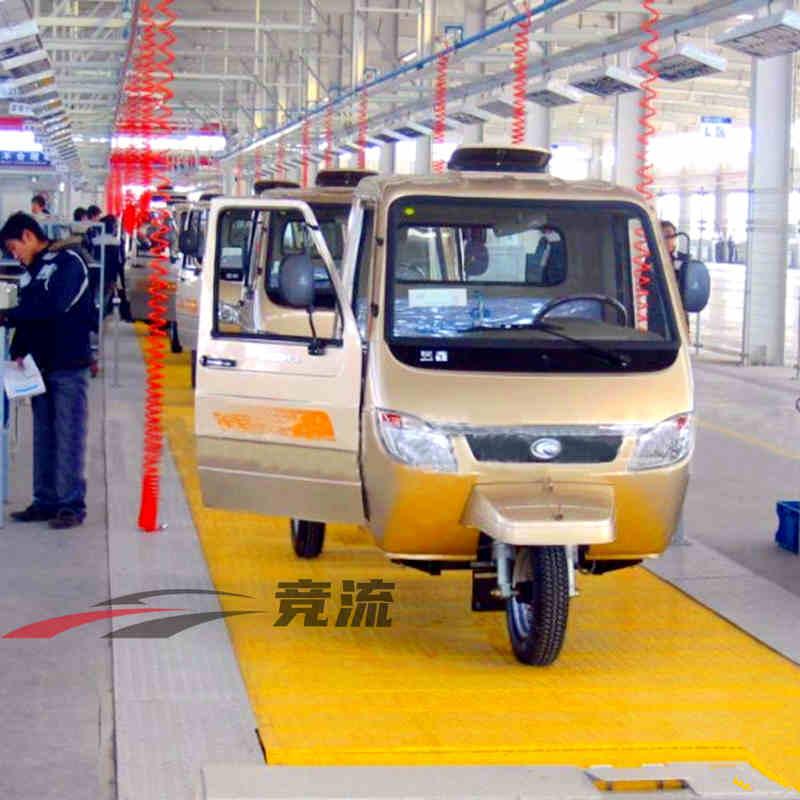
I. Electric tricycle structureIt is generally composed of the engine, transmission system, driving s...
It is generally composed of the engine, transmission system, driving system, control and braking system and electrical parts. Compared with two-wheeled motorcycles, three-wheeled motorcycles have higher stability and are less likely to roll over during driving, especially on rough roads or when carrying loads. They have obvious advantages; they have strong carrying capacity and can be installed with carriages or flat plates, and can carry people or load more goods; the operation is relatively simple and easier to get started.
A chain plate conveyor line, roller conveyor line or suspended conveyor chain is usually used to convey the frame or body to each workstation at a fixed rhythm (such as 3 minutes per vehicle). The length of the assembly line is designed according to the production capacity (such as 500- 1,000 vehicles per day). It is generally divided into pre-assembly area and main line assembly area, and is equipped with parts buffer area, tool storage area, inspection area and other areas.
1. Timeless production: Each workstation completes the operation in a fixed time (such as 3 minutes/vehicle) and moves synchronously through the conveyor belt to avoid backlog of processes.
2. Modular assembly: Pre-assembly of subassemblies (such as engine, rear axle) reduces the complexity of the main line and improves assembly efficiency and consistency.
3. Error-proof design: Key plugs adopt special-shaped design (anti-erroneous insertion), bolts adopt different specifications (anti-erroneous installation), and are equipped with tooling and fixtures for positioning (improve assembly accuracy).
4. Automated assistance: Robot assistance is used in some links (such as automatic bolt tightening machines and automatic gluing machines) to reduce manual errors and improve efficiency.

Previous:
Next: